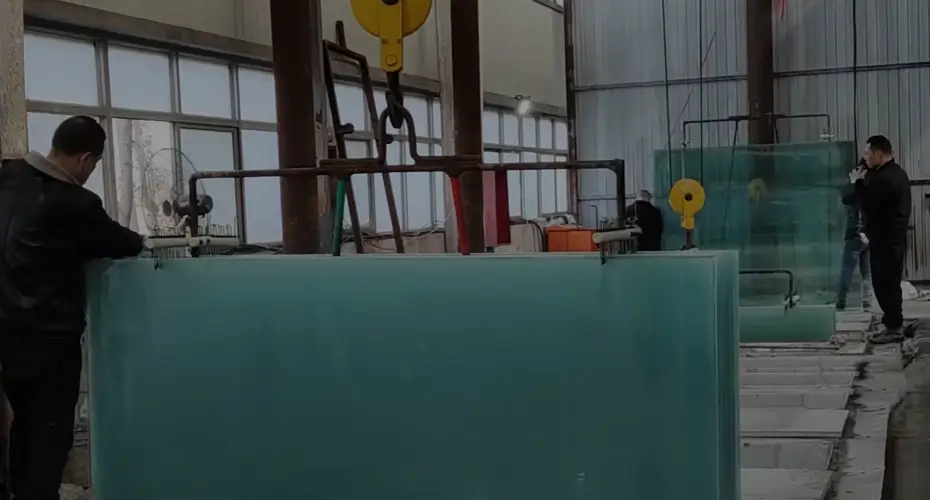Dec . 10, 2024 21:24 Back to list
Understanding the Composition and Benefits of Laminated Glass in Construction and Design
What is Laminated Glass?
Laminated glass is a type of safety glass that consists of two or more layers of glass sandwiched together with a layer of polyvinyl butyral (PVB) or similar resin interlayer. This unique construction gives laminated glass enhanced safety, structural integrity, and sound insulation compared to standard glass. Often used in buildings, automobiles, and various architectural applications, laminated glass has become increasingly popular due to its numerous advantages.
Composition and Manufacturing Process
The production of laminated glass starts with the careful selection of high-quality glass sheets, which are then cleaned and prepared for lamination. The interlayer, typically made of PVB, is applied between the glass sheets under controlled conditions. This interlayer not only bonds the two panes of glass together but also serves as a buffer that holds the glass fragments in place in case of breakage.
The glass and interlayer assembly is then subjected to heat and pressure in an autoclave, a specialized chamber that ensures optimal bonding. This process eliminates any air bubbles and guarantees that the layers form a strong, durable bond. The end result is a pane of glass that is not only tougher and more secure than conventional glass but also flexible, making it less likely to shatter into sharp, dangerous pieces when broken.
Safety and Security Features
One of the primary benefits of laminated glass is its exceptional safety features. When impacted, the glass may crack, but it typically remains adhered to the PVB interlayer. This characteristic helps prevent injuries caused by flying shards and makes laminated glass an excellent choice for applications where safety is paramount, such as in schools, hospitals, and public buildings.
Furthermore, laminated glass is often used in the production of windshields for vehicles. Its ability to prevent fragmentation during a collision significantly enhances the safety of passengers, reducing the risk of injury from shattered glass. Additionally, laminated glass can provide enhanced security against break-ins, as its layered structure makes it more challenging to penetrate compared to standard glass.
what is laminated glass

Acoustic Insulation
Another noteworthy advantage of laminated glass is its soundproofing capabilities. The PVB interlayer serves as a sound-dampening material, which significantly reduces noise transmission between spaces. This makes laminated glass an ideal choice for buildings located in noisy environments, such as near highways or airports. By incorporating laminated glass into windows and facades, architects can create more peaceful and quieter indoor environments, thus improving the overall quality of life for occupants.
UV Protection
Laminated glass also offers protection against harmful ultraviolet (UV) rays, which can cause fading and damage to furniture, fabrics, and artwork. The PVB interlayer can block up to 99% of UV radiation, making laminated glass a smart choice for residential and commercial spaces alike. This UV protection extends the life of interior furnishings and reduces the need for frequent replacements.
Aesthetic Versatility
In addition to its functional benefits, laminated glass provides design flexibility that architects and designers often seek. It comes in a variety of tints and finishes, allowing for customization to fit the aesthetic needs of any project. Furthermore, laminated glass can be enhanced with decorative interlayers, patterns, or even printed designs, adding a unique touch to buildings while maintaining the necessary structural integrity.
Conclusion
In summary, laminated glass is a multifunctional material that combines safety, sound insulation, UV protection, and aesthetic versatility. Whether used in residential, commercial, or automotive applications, laminated glass stands out as a superior choice for those seeking enhanced protection and quality. Its ability to effectively mitigate risks associated with breakage and provide a more tranquil environment makes it an essential component in modern architecture and design. As technology continues to advance, the applications and benefits of laminated glass are likely to expand even further, solidifying its place as a cornerstone in the world of building materials.
-
Safety and Style with Premium Laminated Glass Solutions
NewsJun.24,2025
-
Reinvents Security with Premium Wired Glass
NewsJun.24,2025
-
Premium Float Glass Line for Modern Architecture
NewsJun.24,2025
-
Low Emissivity Glass for Energy-Efficient Architecture
NewsJun.24,2025
-
High-Performance Insulated Glass Solutions for Modern Architecture
NewsJun.24,2025
-
Elevates Interior Style with Premium Silver Mirror
NewsJun.24,2025
Related PRODUCTS














